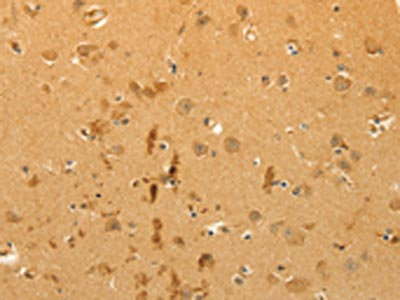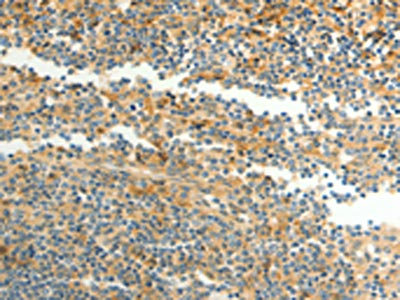
The image on the left is immunohistochemistry of paraffin-embedded Human brain tissue using CSB-PA589025(CFHR1 Antibody) at dilution 1/40, on the right is treated with fusion protein. (Original magnification: x200)
CFHR1 Antibody
CSB-PA589025
ApplicationsWestern Blot, ELISA, ImmunoHistoChemistry
Product group Antibodies
ReactivityHuman
TargetCFHR1
Overview
- SupplierCusabio
- Product NameCFHR1 Antibody
- Delivery Days Customer20
- ApplicationsWestern Blot, ELISA, ImmunoHistoChemistry
- CertificationResearch Use Only
- ClonalityPolyclonal
- ConjugateUnconjugated
- Gene ID3078
- Target nameCFHR1
- Target descriptioncomplement factor H related 1
- Target synonymsCFHL; CFHL1; CFHL1P; CFHR1P; complement factor H-related 1 pseudogene; complement factor H-related protein 1; FHR1; FHR-1; H factor (complement)-like 1; H factor (complement)-like 2; h factor-like protein 1; H36; H36-1; H36-2; H-factor-like 1; HFL1; HFL2
- HostRabbit
- IsotypeIgG
- Protein IDQ03591
- Protein NameComplement factor H-related protein 1
- Scientific DescriptionThis gene encodes a secreted protein belonging to the complement factor H protein family. It binds to Pseudomonas aeruginosa elongation factor Tuf together with plasminogen, which is proteolytically activated. It is proposed that Tuf acts as a virulence factor by acquiring host proteins to the pathogen surface, controlling complement, and facilitating tissue invasion. Mutations in this gene are associated with an increased risk of atypical hemolytic-uremic syndrome.
- ReactivityHuman
- Storage Instruction-20°C or -80°C
- UNSPSC12352203


